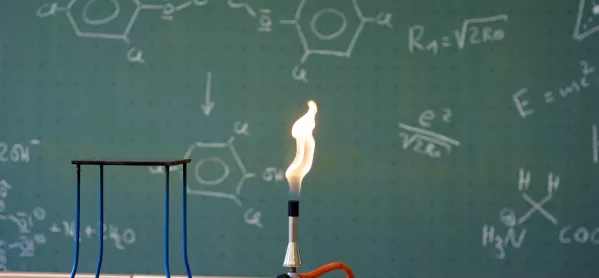What type of car does an electrician drive? A Voltswagon.
I normally need a joke to cheer me up when it’s time to teach electricity again.
As a physicist, I should relish exploring this topic but it doesn’t matter how many times I check the lamps and connections, the start of any practical lesson is invariably beset by cries of “It won’t work!” from all corners of the room.
Even when they do work, how do you explain why two apparently identical bulbs in a series circuit can shine with different brightness?
Practicals can actually come between the students and their understanding. As a beginner teacher, I used to do as much practical learning as possible, but, as I’ve got older, wiser (and lazier), I’ve tried to target my practical work much better, with understanding as the top priority.
Teaching IB electricity
I start by talking a little about the vocabulary of electricity (charge, discharge and so on) and there is an excellent TED video to help with this.
This also acts as an excellent pre-task assessment of what students already know and it’s a useful way to remind them of work they’ve done in the past.
I now try to eliminate or reduce the building of circuits by using role play instead. This not only avoids the chaos described above but also leads to deeper understanding, even at IB level.
I make lots of small pieces of paper (about 1cm x 5cm) and arrange the students around the room in a large circle with me at one side (with the paper) and a lit Bunsen burner on the other (with plenty of mats surrounding it).
The students walk slowly around the room, collecting a piece of paper from me, setting light to the paper at the Bunsen (and placing on the mats) and returning to get more. I ask them in groups to try to identify the elements in the circuit (perhaps by sketching).
Creating a circuit
I am the cell (use correct terminology here), they are electrons, the Bunsen is a lamp and the paper is energy. We then discuss the meanings of terms such as coulomb (a quantity of electrons), current (the rate of flow of electrons/coulombs), potential difference (the difference in energy carried by the electrons entering and leaving a component) and how these apply to our analogy.
I then use a technique called “draw the sentence” to assess their understanding. The main points of the lesson are written as sentences:
- Current is the flow of electrons.
- The electrons carry energy from the cell to the lamp.
- The electrons then return to the cell to get more energy.
- Current measures the rate of flow of charge, etc.
The students divide a sheet of paper into eight and have to “draw” these sentences (one word per drawing allowed).
It is useful to demonstrate this to the class first; I draw humorous sentences about myself which usually reference my love of Nottingham Forest FC and hatred of dogs.
A useful template
Pretty much every electrical phenomenon can be dealt with using this simple analogy. At IB level, you should emphasise that this is a useful model but not reality.
You can extend more able young physicists by getting them to explore the limitations of the analogy, explaining the actual nature of electron potential energy in an electric field in preparation for topic 10 (Fields).
Having written this, I feel a little happier about the next time I have to teach electricity, although no less trepidatious about the students themselves.
Simon Porter teaches physics for international schools organisation Nord Anglia Education. He is also a Tes Subject Genius and a passionate Nottingham Forest supporter
Find more information about the International Baccalaureate including resources, news and more

